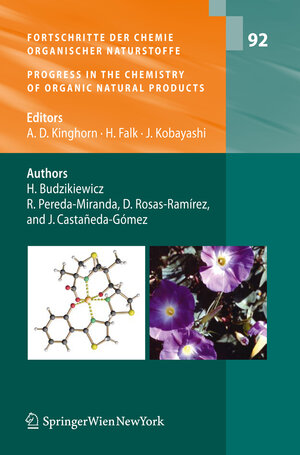Fortschritte der Chemie organischer Naturstoffe / Progress in the Chemistry of Organic Natural Products, Vol. 92
herausgegeben von A. Douglas Kinghorn, Heinz Falk und Junichi KobayashiResin glycosides are part of a very extensive family of secondary metabolites known as glycolipids or lipo-oligosaccharides and are constituents of complex resins (glycoresins) (1) unique to the morning glory family, Convolvulaceae (2). These active principles are responsible for the drastic purgative action of all the important Convolvulaceous species used in traditional medicine throughout the world since ancient times. Several commercial purgative crude drugs can be prepared from the roots of different species of Mexican morning glories. Their incorporation as therapeutic agents in Europe is an outstanding example of the assimilation of botanical drugs from the Americas as substitutes for traditional Old World remedies (3). Even though phytochemical investigations on the constituents of these drugs were initiated during the second half of the nineteenth century, the structure of their active ingredients still remains poorly known for some examples of these purgative roots. During the last two decades, the higher resolution c- abilities of modern analytical isolation techniques used in conjunction with pow- ful spectroscopic methods have facilitated the elucidation of the active principles of these relevant herbal products. This chapter describes the ethnobotanical information associated with the p- gative morning glory species and how traditional usages were instrumental in plant selection for chemical studies. The advantages and limitations of available analy- cal techniques for the isolation, puri? cation, and structure characterization of the individual constituents of these complex glycoconjugates are also discussed.







